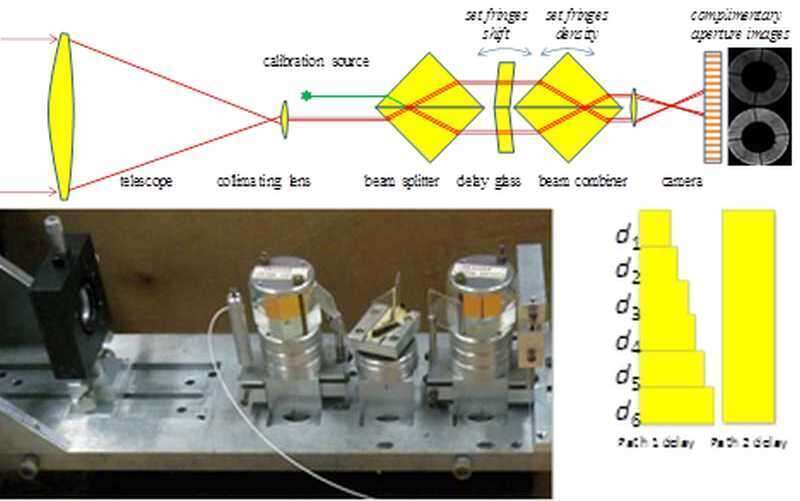
FOURIER TRANSFORM SPECTROMETER FOR NARROW LINES
Summary: We developed a non-scanning and extremely stable Fourier Transform Infra-red Spectrometer (FTIR), for detection of narrow lines, to identify and measure molecules in our own atmosphere or in remote planets.
If life forms on exoplanets, it must have some complex molecules that can convert light into energy, similar to chlorophyll or carotene. Such molecules exhibit narrow lines, very different in width from the planet itself. In parallel, we are interested in measuring narrow lines of gases in our own atmosphere.
For higher spectral resolution the most appropriate device is an FTIR. The slow scanning of path difference is replaced by an interferometer which provides all delays in one measurement. This is achieved by using a two-dimensional detector measuring the interference of two beams, where each path difference (delay) is measured by a different pixel.

Figure 1: Interferometer and realisation. The delays between the beams are stepped for a wide range of frequencies.
It is not necessary to measure the whole spectrum, so the minimum delay does not have to be zero: a high-pass filter. Thus wide lines and flat backgrounds are excluded. The width of the detector is a few hundred pixels, limiting the maximum delay. Thus we add more and more delays for additional rows of pixels. This is a simple way to convert the linear fringe pattern into a staggered rectangular one.

Figure 2: Fringes from a black body and a 690nm LED, and a Fourier transform of the pattern.
Powered by Eventact EMS